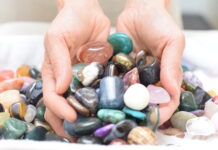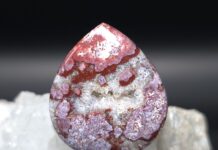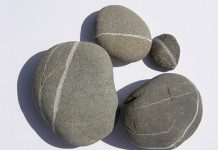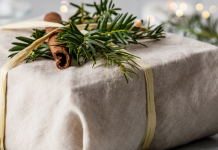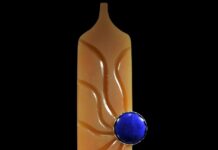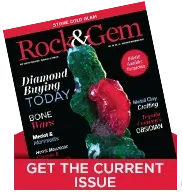
Scarabs are beetle-style amulets with powerful images revered in ancient Egypt. They are usually carved as a relief in the stylized representation of a beetle on the top, and as an impression seal with inscriptions on the bottom to be pressed on wax or clay and produce a positive image. The beetle species adopted is the ‘sacred beetle’ (Ateuchus sacer or Scarabeaus sacer). This is a dung black beetle, native to southern Europe, northern Africa and western Asia. It was venerated in the ancient Egyptian civilization.

Ancient & Modern Scarabs
The term scarab is a shortened version of the ancient word scarabeaus. In modern times, the scarabs impart archaeological and historical interest and are regarded as amulets or fashion motifs set in vintage and contemporary jewelry and souvenir items.
The scarab’s convex shape ranges in height from shallow to high-domed. It can be very plain or elaborately decorated. The flat underside served as a blank canvas for artists to engrave hieroglyphic characters, which often displayed the bearer’s mark, symbols or decorative designs. The scarabs were used as signet seals and were commonly drilled lengthwise to be worn as pendants or mounted on swivel rings. Some scarabs were used as funeral offerings placed on mummies’ hearts. Others were treated as protective amulets and lucky charms, inscribed with a magic incantation or symbol to aid the wearer against evil powers. This custom and belief are still popular today.
Scarabs made the news earlier this year when a 2,800-year-old engraved carnelian scarab depicting a griffin was found by a hiker in Israel’s Tabor Stream Nature Preserve. Archeologists believe it dates back to the Assyrian period.
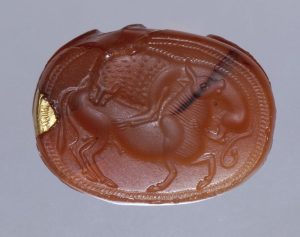
Scarabs & Engraved Seals
Early engraved seals were stamp seals and date as far back as 6500 B.C. from the Indus River Valley and Mesopotamia. Cylinder seals appeared around 3300 B.C. in Mesopotamia made with hard gem materials of hematite, serpentine, jasper, chalcedony and lapis. The scarab seal first appeared in ancient Egypt with names of kings of the 4th Dynasty, dating about 3700 B.C.
Although originally intended as a sealing device, the scarab was developed to hold a greater religious significance. The scarab was ideally suited for stamping paper documents made from papyrus, whereas the cylinder seal was well-suited for sealing large objects.
The scarab seal was adopted by the Phoenicians in the later sixth to mid-fourth century B.C. Around 580 B.C., the Greeks, possibly in Cyprus, created the Graeco-Phoenician style and then the Greek scarabs. The stones used by the Greek carvers were mainly types of quartz, including rock crystal, carnelian and chalcedony. Most of the Archaic Greek gems were probably made on the Greek islands, and feature distinctively Greek designs of animals, humans and mythological subjects. One of the early Greek gem engravers was Mnesarchos, father of the philosopher Pythagoras, from the island of Samos.
The Etruscans used the Greek scarabs almost exclusively for their seals which were almost exclusively carved in dark carnelian, with more elaborate designs featuring mythological scenes of gods and heroes.
Lost Interest
The Greek artists gradually lost interest in the scarab style as it was not relevant to the Greek religious symbolism. The design evolved over the years from the scarab to the scaraboid which was also oval in its outline shape but the beetle-style anatomic back was replaced by a simple un-ornamented dome, which became the precursor of today’s cabochon.
Although originally intended as a sealing device, the scarab was developed to hold a greater religious significance. The scarab was ideally suited for stamping paper documents made from papyrus, whereas the cylinder seal was well-suited for sealing large objects.”
What Did the Scarabs Symbolize?
The revered scarab in ancient Egypt symbolized the sun god Ra at sunrise, the idea of rebirth and eternity. It became one of the most prevalent symbols of ancient Egypt. The ancient Egyptians believed that the real beetle depicted on scarabs emerged from dung and then rolled its ball of dung similarly to the god Ra pushing the sun over the horizon.
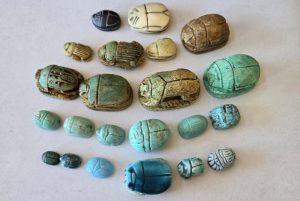
Courtesy Helen Serras-Herman
What Materials Were Used?
Most of the early Egyptian scarab seals were made of soft materials such as serpentine and steatite glazed with a fired-on coating of copper minerals imparting a blue-green glaze. Egyptian faience also appears in the 5th millennium B.C. It is a ceramic material — a combination of quartz, alkaline salts, lime and mineral-based colorants in a bright blue glaze usually imitating the rare blue gemstones of turquoise and lapis.
A famous winged scarab is the center of a large cloisonné pectoral discovered in King Tutankhamun’s tomb. The pendant is inlaid with gemstones and colored glass. Enamel forms the scarab’s wings. It is carved in canary-yellow Libyan Desert glass formed from a meteorite impact on the sands of the eastern Sahara Desert 29 million years ago that melted the quartz (Benjamin Leonard, of copper minerals imparting a blue-green that melted the quartz (Benjamin Leonard, Archaeology Magazine, Sept/Oct 2019). Two more famous jewelry items discovered in King Tutankhamun’s tomb are a stunning bracelet and a necklace both featuring scarabs carved in lapis lazuli.
In later periods, hard gemstones including carnelian, sard, lapis lazuli, turquoise, jaspers, onyx and obsidian were used and imitated in glass. For scaraboids, lighter gem materials were used, including rock crystal and blue chalcedony. By the 3rd century B.C., garnets, agates, amethyst, topaz and beryl were used.
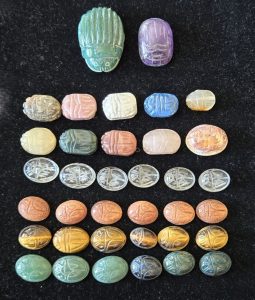
Courtesy Helen Serras-Herman
Carving Scarabs Today
Nowadays, scarabs are carved on every possible material, especially quartzes including chalcedonies (carnelian and aventurine), tiger eye and agates often dyed green or banded agate.
It is best to create high domes and polish all surfaces if you are carving scarabs in transparent gemstones. If carving opaque gemstones, you can simply high polish the dome and the flat surface, leaving the engravings matt for contrast.
Scarabs made the news earlier this year when a 2,800-year-old engraved carnelian scarab depicting a griffin was found by a hiker in Israel’s Tabor Stream Nature Preserve. Archeologists believe it dates back to the Assyrian period.”
Carving Steps
The first step is to create a high-domed cabochon and establish the proportions between the top bug carving and the bottom bevel. These proportions can vary. The scarab portion can be shallow (low relief), the lower part heavier and vice versa. The scarab’s back may show a ridge, a spine, or omega (double hump) shape. The style can be simple, unadorned or ornate and naturalistic.
You may want to create a wide lower band border where you can engrave decorative lines, circles, the tongue or U-shaped pattern, or criss-cross fretwork lines. Depending on the fragility of the gem material, you may execute some elaborate carving under the top scarab surface, carving out the folded legs and leaving empty space for the carving to breathe. Conversely, you may only do some undercut carving below the head and front legs.
The deeper the grooves the more dimensional the carving becomes. Of course, the deeper grooves require careful and longer sanding. You can carve the grooves with sintered diamond knife-edge wheels, starting at 220 grit and then to 600 grit, or use silicon carbide wheels before going on to fine sanding, pre-polish and final polish. Be careful when engraving the center line on the top of the scarab that divides the wings, so that the scarab is not lopsided.
You may set the scarab in a setting, drill the scarab to be worn as a pendant, or cut a groove around the beetle’s base and fit a gold or silver wire.
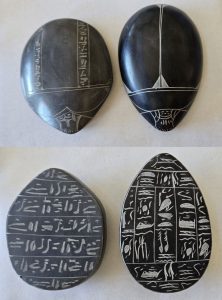
Courtesy Helen Serras-Herman
What Symbols are Used on the Bottom?
On the bottom, you may engrave a preferred symbol or design. The engraving can be a shallow intaglio, enough to produce a stamp impression. To be used as a seal, the designs should be carved in reverse to make a positive mirror impression when pressed into wax or clay.
Among the many ancient Egyptian symbols were the Ankh (life), the Eye of Horus known as Wedjat (protection & health), the Eye of Ra (symbol of the sun) and the Tyet/Tiet symbol known as the “Knot of Isis” (feminism, fertility, and maternal protection).
A scarab is a beetle-style amulet with powerful images revered in ancient Egypt. It is usually carved as a relief in the stylized representation of a beetle on the top, and as an impression seal with inscriptions on the bottom to be pressed on wax or clay and produce a positive image.”
You may also engrave figures and animal representations, mythological scenes, fauna, or decorative spirals and other geometric patterns. In addition, you may want to create a decorative border around your oval bottom surface, often with small dots creating a sense of space.
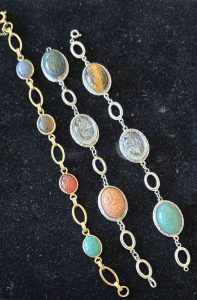
Courtesy Helen Serras-Herman
Scarabs Today
Even though the scarab is an ancient motif, it has never lost its artistic appeal and remains a symbol of beauty and culture. The symbolism still captivates people, and scarabs are duplicated today en mass in jewelry and charms offered as souvenirs in Egypt and all over the world.
Most scarab carvings today are not original designs but are copies of ancient jewelry pieces. Be careful when shopping and know the provenance.
Many commercial scarabs today are not carved gemstones. They are glass imitations and use other materials such as blue-colored brass imitating turquoise and lapis. Some descriptions say “handmade, vintage,” “rare find, vintage before 2000,” or simply “stone” with no description, or “polystone” – a mixture of plastic resin and stone. Be careful of the metals used in the jewelry; certain bracelets are described at the top as “gold” and in the fine print as 12K-gold-filled.
Take inspiration from the past, make your interpretation and create new artwork; the fantasy field is wide open. You can find the right symbolism that speaks to your values and ideas. The scarab’s easily identified motif is adored by many.
This story about scarabs previously appeared in Rock & Gem magazine. Click here to subscribe. Story by Helen Serras-Herman.


